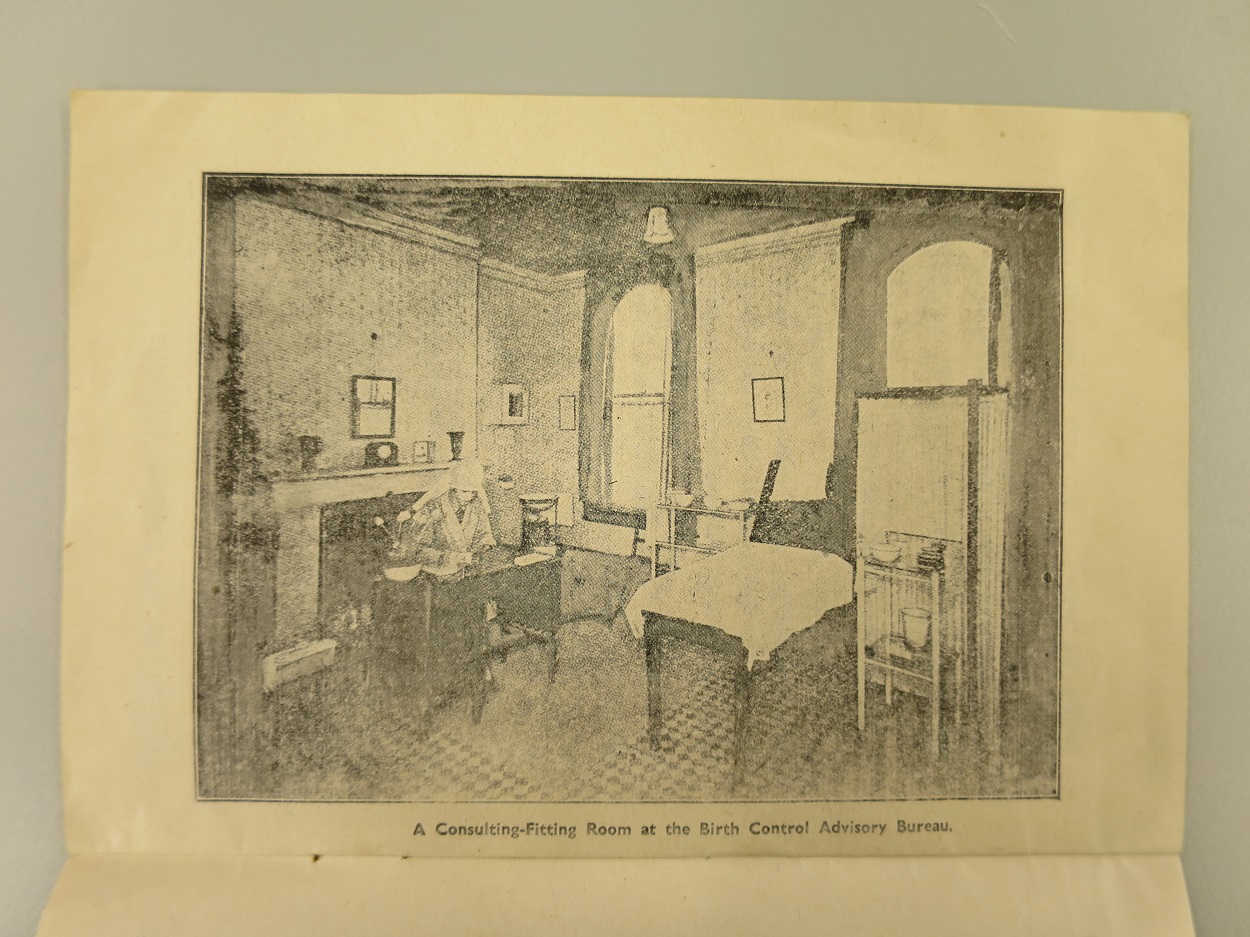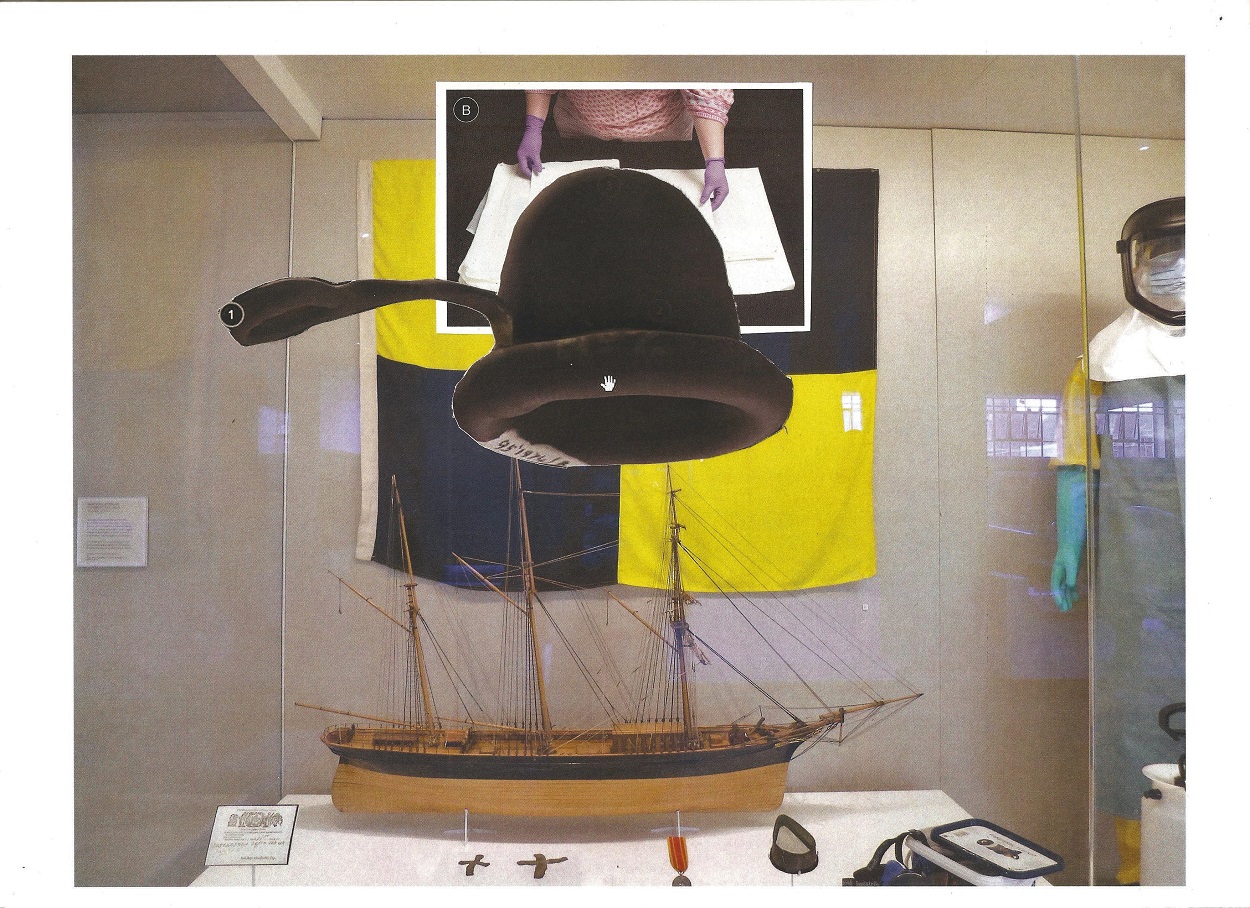
Lamberts Prorace Ltd. product catalogue, mid-1940s, Wellcome Library, London. Photograph by Nora Heidorn.

Society for Constructive Birth Control and Racial Progress, ‘The Mothers’ Clinic for Constructive Birth Control’, Wellcome Library, London. Photograph by Nora Heidorn.

Nora Heidorn, research-collage, 2021
Violence, Care, Cure. (Self)perceptions Within the Medical Encounter
Conference at Institute for Cultural Inquiry, Berlin
Convened by Clio Nicastro and Marta Cenedese
3-4 February 2022
Touching Matters of Care: A Visual Approach to the Care and Violence in Dr Marie Stopes’ Birth Control Campaign
My paper for this conference will discuss a nascent image-making practice that is part of my research about an early twentieth century contraceptive, the 'Prorace' cervical cap. The cervical cap was trademarked by Dr. Marie Stopes, instigator of the UK birth control movement. Through writing and image-making, this research project stages the 'Prorace' cap as a complex object which simultaneously holds narratives about emancipation and oppression, about care and violence.
Whilst Stopes is primarily known as a feminist birth control advocate whose work improved the reproductive choices of British women from the 1920s, her campaign was motivated by a eugenic agenda to improve the 'fitness' of the population. Stopes believed that through widespread use of birth control, poverty, ill health and disability could be diminished to strengthen the nation and the Empire. These aims were implicitly communicated to its users through the trademark 'Prorace', printed across the cap's dome.
This paper will focus on image-making as a methodology to visually and conceptually work through the complexities and ambiguities of the cap. Digital images and analog research-collages seek to complicate the ways the artefact has been staged in photographs and 3D scans for the museum catalogue. The practice proposes to resist the eugenic obsession with purity and hygiene by employing methodologies and metaphors of touch.
Making these image using photographs taken during archival research, scans and screenshots, is itself a practice of touching. Visual representations of touch and its attendant risk of contamination enter these images in the form of gloved hands and their digital avatar, the hand-shaped cursor. Touch as a mode of engagement with the contradictory narratives of the 'Prorace' cervical cap is as ambiguous as the object itself: touching may imply caring proximity, but touch can also be felt as being paternal, medical, violent, sexual, policing ... (Browne and Jones 2016).
Back